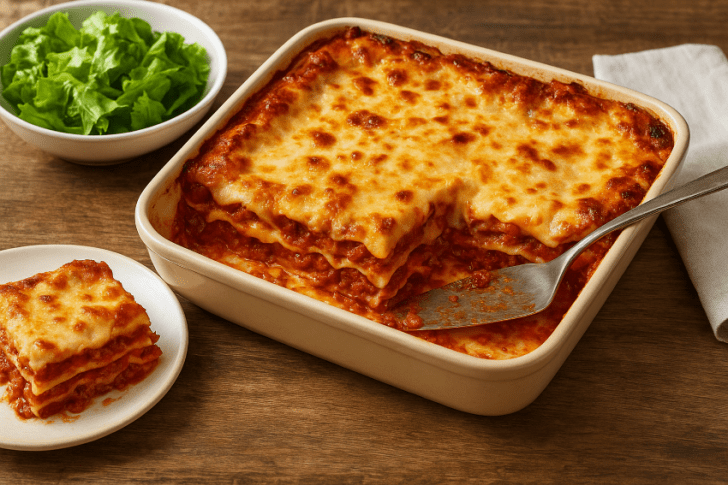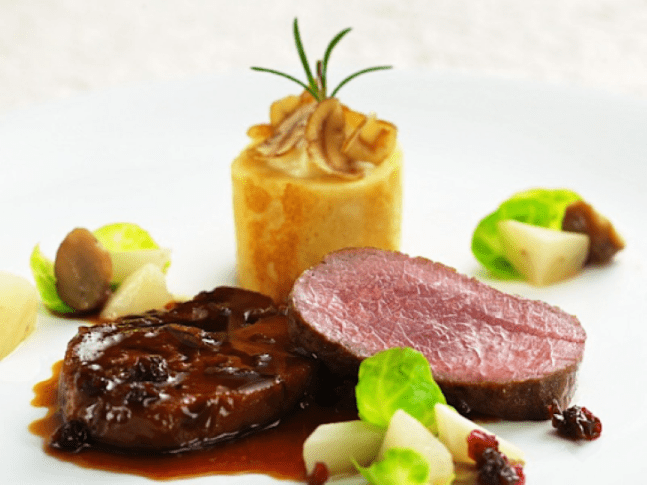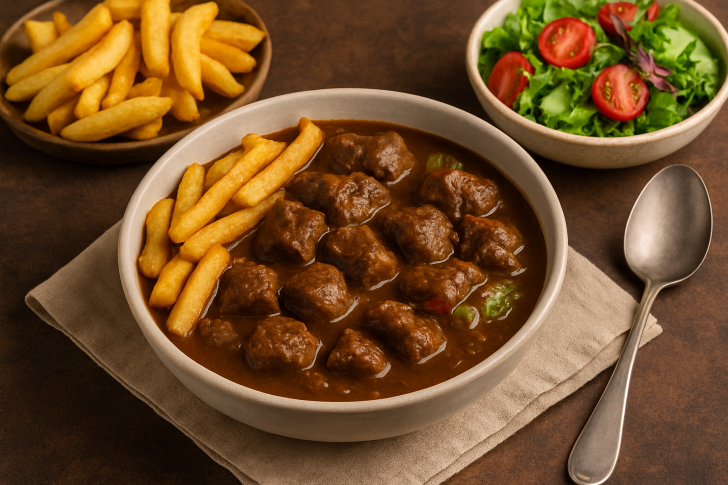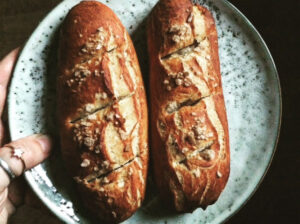The Most Authentic Italian Grandmother’s Lasagna Recipe: A Secret Passed Down for Generations
There’s something magical about the smell of lasagna baking in the oven — that warm, comforting aroma that fills the entire house and pulls everyone to the table. For me, that smell is childhood. It’s Sundays at Nonna’s house in Emilia-Romagna — in the northern part of Italy, the real home of lasagna — where she’d spend the morning rolling fresh pasta, stirring a slow-simmering ragù, and humming along to the radio.
This isn’t just any lasagna. It’s the most authentic Italian grandmother’s lasagna recipe, the kind that’s been passed down through generations, always made with love and never in a rush. Let’s take a little journey into its history, the traditional ingredients, and the timeless techniques that make this dish unforgettable.

🍅 A Little History: Where Lasagna Truly Began
Before lasagna became famous around the world, it was born in Bologna, right in the heart of Italy. The earliest versions date back to the Middle Ages, when families layered fresh pasta with ragù and béchamel for special occasions — weddings, Easter, or big Sunday lunches.
Lasagna was never an everyday meal. It was a dish of celebration, a way for Italian grandmothers (le nonne italiane) to show their love through cooking. Everything was made by hand — the pasta, the sauce, even the grated cheese. Nothing came from a jar. The magic ingredient was always the same: time and from the hart.
🧀 Old vs. Modern Lasagna: What Changed?
Traditional lasagna is all about simplicity, patience, and fresh ingredients. Nonna would spend hours preparing her ragù alla Bolognese — meat, onion, carrots, celery, and a splash of red wine, simmered slowly until the flavors melted together. She’d make her pasta with eggs from the neighbor’s chickens and roll it out so thin you could almost see through it.
Today, many recipes take shortcuts — dried pasta, ricotta instead of béchamel, or ready-made sauces. And while these versions are tasty, they lose that deep, layered flavor that only comes from cooking with care. Authentic lasagna isn’t just about filling your stomach — it’s about filling your heart with love.
🥖 The True Ingredients of Authentic Italian Lasagna
Here’s what makes Nonna’s lasagna truly special:
- Fresh pasta sheets – Made from eggs and flour, soft and silky.
- Ragù alla Bolognese – A mix of beef and pork cooked low and slow for hours.
- Béchamel sauce – Creamy, smooth, and perfectly balanced with nutmeg.
- Parmigiano-Reggiano – Aged cheese that adds that unmistakable umami flavor.
- Olive oil, salt, pepper, and love – Because every Italian recipe starts this way.
🍝 The Most Authentic Italian Grandmother’s Lasagna (for 4 persons)
🥩 For the Ragù alla Bolognese (Meat Sauce)
-
250 g (9 oz) ground beef (preferably 80% lean)
-
100 g (3.5 oz) ground pork
-
1 small onion, finely chopped
-
1 small carrot, finely chopped
-
1 small celery stalk, finely chopped
-
2 tbsp extra virgin olive oil (or a knob of butter)
-
100 ml (⅓ cup + 1 tbsp) dry red wine
-
300 g (10.5 oz) tomato passata (puréed tomatoes)
-
1 tbsp tomato paste
-
100 ml (⅓ cup + 1 tbsp) whole milk
-
Salt and freshly ground black pepper, to taste
-
Optional: a small pinch of nutmeg
🥛 For the Béchamel Sauce
-
500 ml (2 cups) whole milk
-
40 g (3 tbsp) unsalted butter
-
40 g (⅓ cup) all-purpose flour
-
Salt, to taste
-
A pinch of ground nutmeg
🍳 For the Fresh Pasta Sheets
(or substitute with 250 g dried lasagna sheets, pre-cooked if needed)
-
200 g (1 ⅔ cups) “00” flour (or all-purpose flour)
-
2 large eggs
-
A pinch of salt
🧀 For Assembly
-
100 g (1 cup) Parmigiano-Reggiano cheese, freshly grated
-
A bit of butter (for greasing the baking dish)
The secret is to let the ingredients shine. Use quality products, cook with patience, and you’ll taste the difference in every bite.
🔧 The Tools and Oven Nonna Swore By
Traditionally, Nonna baked her lasagna in a wood-fired oven (forno a legna). That’s what gave the dish its slightly smoky flavor, crispy top, and even heat distribution.
Nonna didn’t need fancy equipment. Her tools were simple but perfect:
- A wooden board and rolling pin for her pasta.
- A cast-iron or ceramic baking dish that kept the heat even.
- A wood-fired oven that gave the lasagna its slightly crisp, smoky top.
Since most of us don’t have a wood oven at home, the next best option is a modern electric or convection oven — which actually gives you more consistent results and better temperature control.
Here’s how to adapt perfectly:
✅ If You’re Using a Conventional (Electric) Oven:
- Temperature: 375°F (190°C)**
- Baking Time: 45–50 minutes total
- Method:
- Cover the lasagna with foil for the first 30–35 minutes to keep it moist.
- Remove the foil for the final 10–15 minutes to brown the top beautifully.
- Let it rest for at least 15–20 minutes before serving — this allows the layers to set and flavors to deepen.
✅ If You’re Using a Convection Oven (Fan-Forced):
- Temperature: 350°F (175°C)**
- Baking Time: Around 40–45 minutes
- Tip: The fan circulates heat evenly, so the lasagna browns faster. Keep an eye on the top — if it’s browning too quickly, loosely cover it again with foil.
✅ If You Have a Wood-Fired or Pizza Oven (Lucky You!):
- Temperature: Around 400°F (200°C) but not directly on the hottest surface.
- Bake the lasagna on a middle rack or slightly away from the fire for 35–40 minutes, rotating halfway through.
- The result? Slightly smoky, golden edges — just like Nonna used to make on Sundays.
🍽️ Final Tip:
Always let your lasagna rest before cutting — this is the secret Italians never skip. Hot lasagna straight from the oven will slide apart as it is still soft from the inside, but after a short rest, it becomes thick and perfectly sliceable, with all those beautiful layers intact.
💡 Nonna’s Practical Tips and Modern Twists
Even though she was traditional, Nonna always said, “Ogni famiglia ha la sua lasagna” — every family has its own lasagna. So don’t be afraid to make it yours:
- Lighten it up with turkey instead of pork or add layers of spinach.
- Gluten-free version? Use thin slices of eggplant or gluten-free pasta sheets.
- Extra creamy? Mix a little mascarpone into the béchamel.
- Save time: Make the ragù the day before — it tastes even better the next day.
- Freezer tip: Assemble, don’t bake. Freeze it raw and cook it straight from the freezer when needed.
The most important rule? Take your time and enjoy the process. Lasagna made in a hurry never tastes the same.
❤️ Cook It, Share It, and Keep the Tradition Alive
Lasagna isn’t just food — it’s a memory, a story, a piece of Italy baked into every layer. From the rich ragù to the creamy béchamel and tender pasta, each bite connects us to generations of grandmothers who cooked with love and heart.
So here’s my challenge to you: make this lasagna today. Don’t wait for Sunday. Roll up your sleeves, pour yourself a glass of Barbera red wine, and fill your kitchen with the aroma of Italy.
When it’s done, sit down, take that first bite, and you’ll understand why this recipe has survived for centuries. Then — and this is important — share it. Send it to a special friend, cook it for your family, post a photo, and spread the love.
Because the only thing better than eating Nonna’s lasagna… is sharing it.❤️






